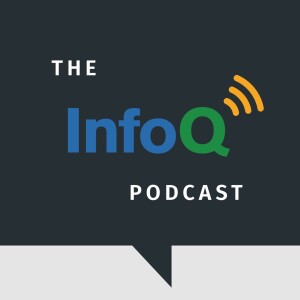
Pat Kua on Technical Leadership, Cultivating Culture, and Career Growth
 2019-09-06
2019-09-06
Download
Right click and do "save link as"
In this podcast we discuss a holistic approach to technical leadership, and Pat provides guidance on everything from defining target operating models, cultivating culture, and supporting people in developing the career they would like. There are a bunch of great stories, several book recommendations, and additional resources to follow up on.
* Cultivating organisational culture is much like gardening: you can’t force things, but you can set the right conditions for growth. The most effective strategy is to communicate the vision and goals, lead the people, and manage the systems and organisational structure.
* N26, a challenger bank based in Berlin has experienced hypergrowth over the past two years. Both the number of customers and the amount of employees have increased over threefold. This provides lots of opportunities for ownership of product and projects, and it creates unique leadership challenges.
* A target operating model (TOM) is a blueprint of a firm's business vision that aligns operating capacities and strategic objectives and provides an overview of the core business capabilities, internal factors, and external drivers, strategic and operational levers. This should be shared widely within an organisation
* Pat has curated a “trident operating” model for employee growth. In addition to the class individual contributor (IC) and management tracks, he believes that a third “technical leadership” track provides many benefits.
* People can switch between these tracks as their personal goals change. However, this switch can be challenging, and an organisation must support any transition with effective training.
* Pat recommends the following books for engineers looking to make the transition to leadership: The Manager’s Path, by Camille Fournier; Resilient Management, by Lara Hogan; Elegant Puzzle, by Will Larson; and Leading Snowflakes by Oren Ellenbogen. Pat has also written his own book, Talking with Tech Leads.
* It is valuable to define organisation values upfront. However, these can differ from actual culture, which more about what behaviours you allow, encourage, and stop.
* Much like the values provided by Netflix’s Freedom and Responsibility model, Pat argues that balancing autonomy and alignment within an organisation is vital for success. Managers can help their team by clearly defining boundaries for autonomy and responsibility.
* Developing the skills to influence people is very valuable for leaders. Influence is based on trust, and this must be constantly cultivated. Trust is much like a bank account, if you don’t regular deposit actions to build trust, you may find yourself going overdrawn when making a deposit. This can lead to bad will and defensive strategies being employed.
view more
More Episodes
AI, ML, and Data Engineering Trends in 2024
 2024-08-14
2024-08-14
 2024-08-14
2024-08-14
Architecture Modernization with Nick Tune
 2024-05-27
2024-05-27
 2024-05-27
2024-05-27
012345678910111213141516171819
Create your
podcast in
minutes
- Full-featured podcast site
- Unlimited storage and bandwidth
- Comprehensive podcast stats
- Distribute to Apple Podcasts, Spotify, and more
- Make money with your podcast
It is Free
- Privacy Policy
- Cookie Policy
- Terms of Use
- Consent Preferences
- Copyright © 2015-2024 Podbean.com





